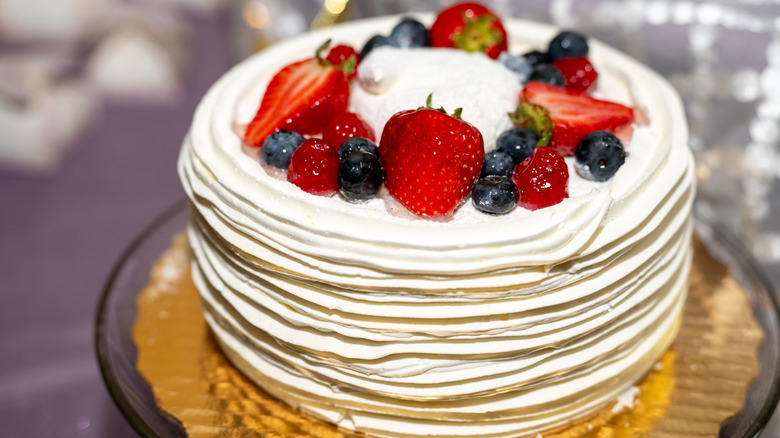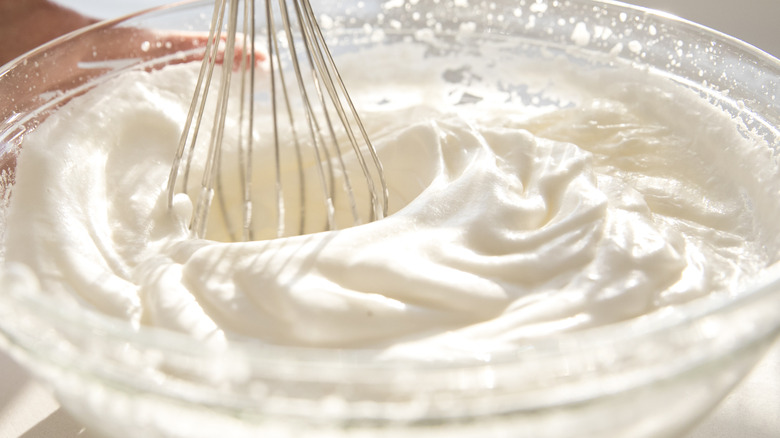How To Stabilize Whipped Cream Frosting With One Extra Ingredient
We may receive a commission on purchases made from links.
Whether it comes straight from a can or triples in volume by hand, whipped cream is a beloved and easy way to add a bit of indulgent, creamy silkiness to a dessert. At its most basic, it's nothing more than heavy whipping cream, a bit of powdered sugar, and possibly vanilla and a pinch of salt, beaten into silky peaks that seem to defy the earth's gravitational pull. The average whipped cream, however, has a very short life span, giving it only an ephemeral window of time to be enjoyed before becoming weepy or turning whatever it's resting on top of into a soggy mess. Fear not, as thankfully there is an inexpensive, shelf-stable ingredient that will take your whipped cream frosting from sad to sturdy: gelatin.
We recommend choosing an unflavored gelatin that doesn't include additional sweeteners or food colorings, like this classic Knox option. While we don't expect you to know everything about gelatin, you should know that it is an animal-based product, so be aware of that if you're planning to serve your stabilized whipped cream to any vegetarian guests. Gelatin is usually available in two forms, powdered and sheets, but powdered is ideal for our whipped cream frosting. Gelatin has many useful applications in the kitchen beyond firming up sugary, colored water (aka Jell-O), such as thickening meat stock and ensuring your homemade ice cream is soft and free of ice crystals.
Stabilizing whipped cream with gelatin is easy
The process of stabilizing whipped cream doesn't veer too far from making regular whipped cream. Start by chilling the bowl and beaters in the fridge, and make sure the cream is very cold. Stir together a bit of cold water and the gelatin powder in a small bowl, then wait for the gelatin to bloom. You need about a teaspoon of gelatin for every 1 cup of whipped cream you are making. Begin whipping the heavy cream and any other ingredients like vanilla and powdered sugar until you get soft peaks. Briefly warm the bloomed gelatin in the microwave until completely dissolved, then whisk in a splash of chilled cream. Pour this mixture into the semi-whipped cream and continue to whip to your desired stiffness. From here, you can use the stabilized whipped cream as frosting any way you like, but it looks especially impressive when piped with a dramatic tip, as the peaks and valleys hold their shape beautifully.
Stabilized whipped cream is the absolute best type of frosting to use on an ice cream cake, and is also perfect for frosting light, airy sponge cakes that you don't want to weigh down with traditional heavy buttercreams. It's ideal for making showstopper cup cakes, and will add a delightful hit of creaminess to any dessert. You can even opt out of adding any sweetener to the mix. A creamy, light, yet unsweetened whipped cream topping is perfect for dense loaf cakes like this mocha marble cake, or for slightly savory-leaning confections like zucchini bread or an autumnal pumpkin banana bread.

